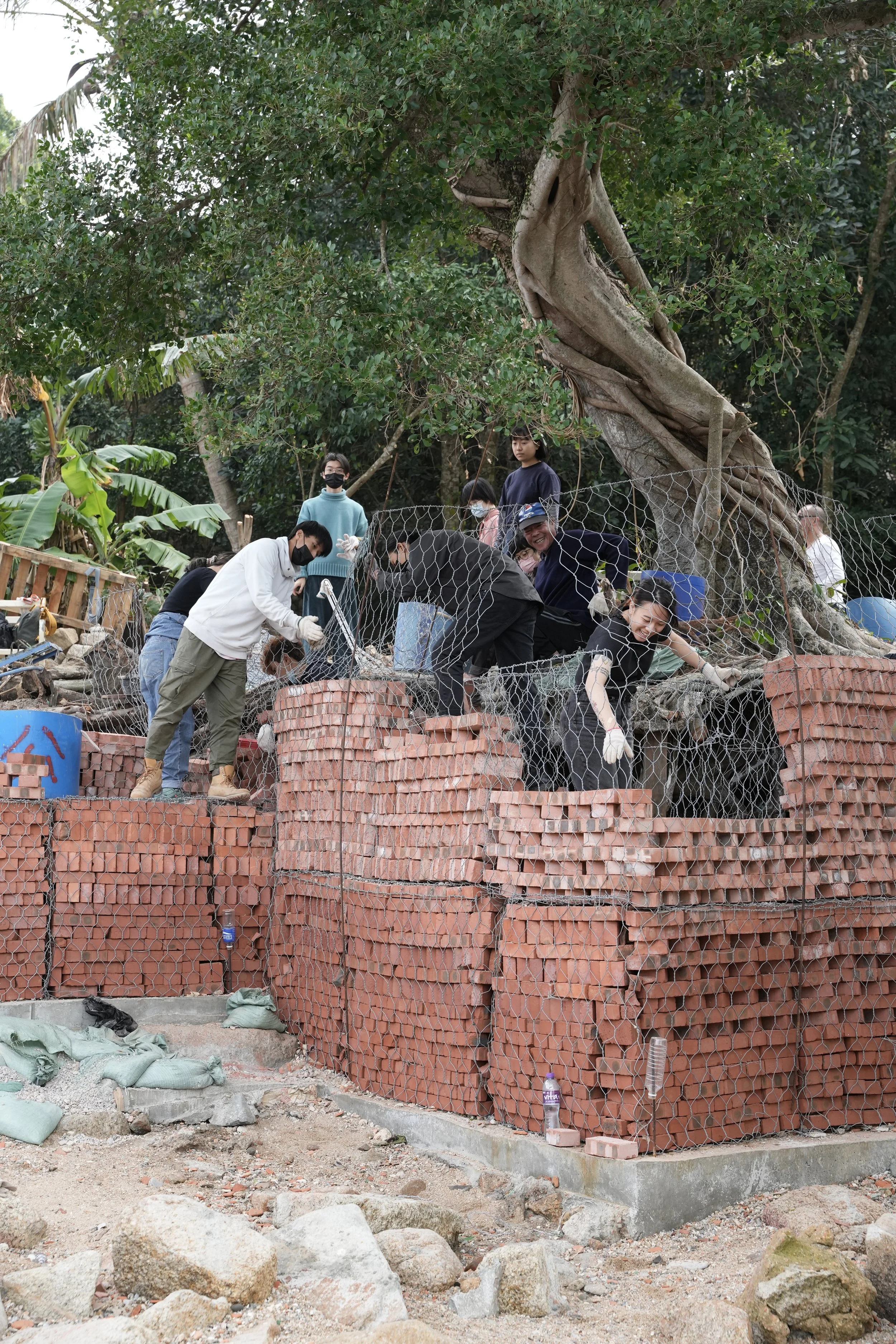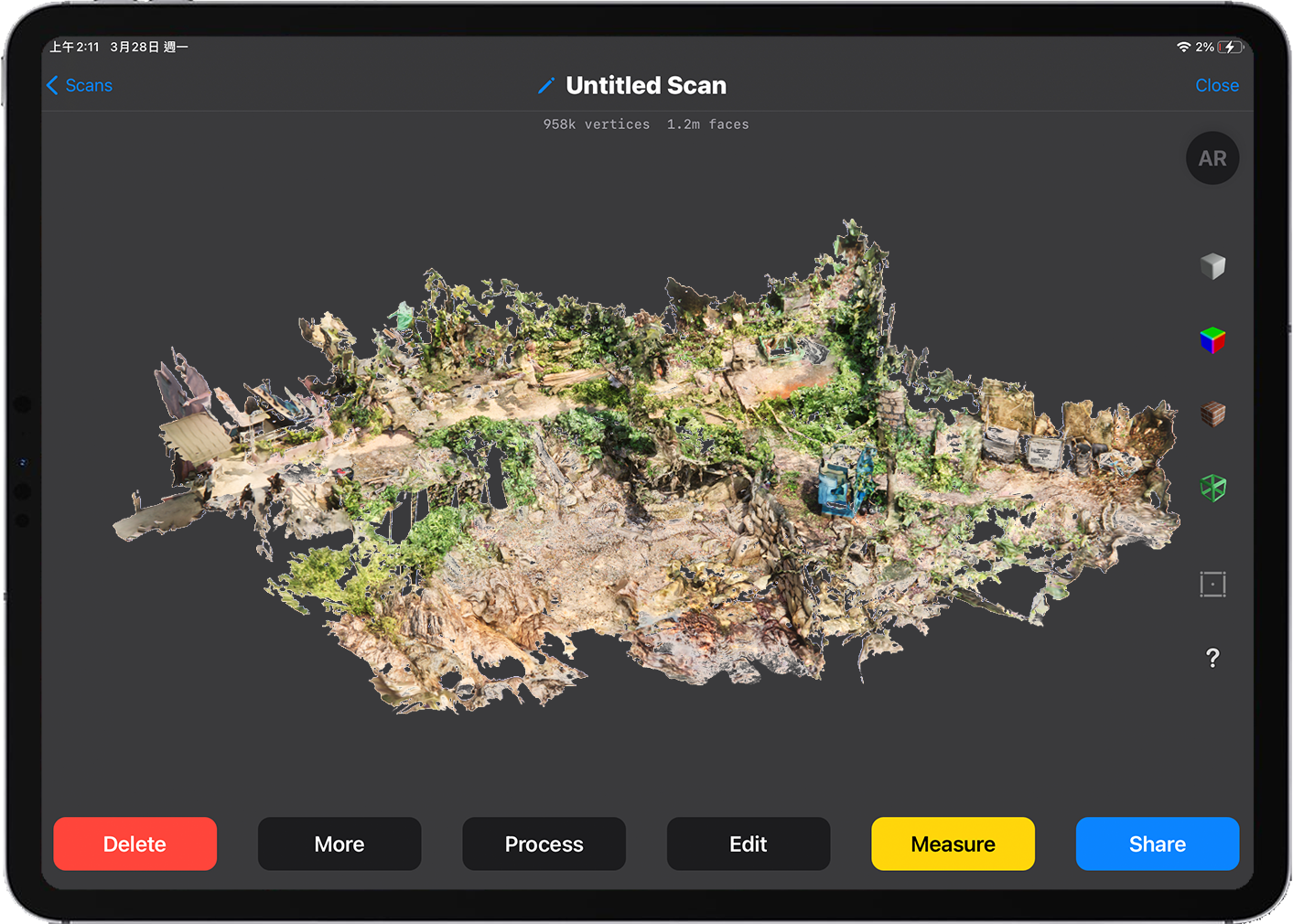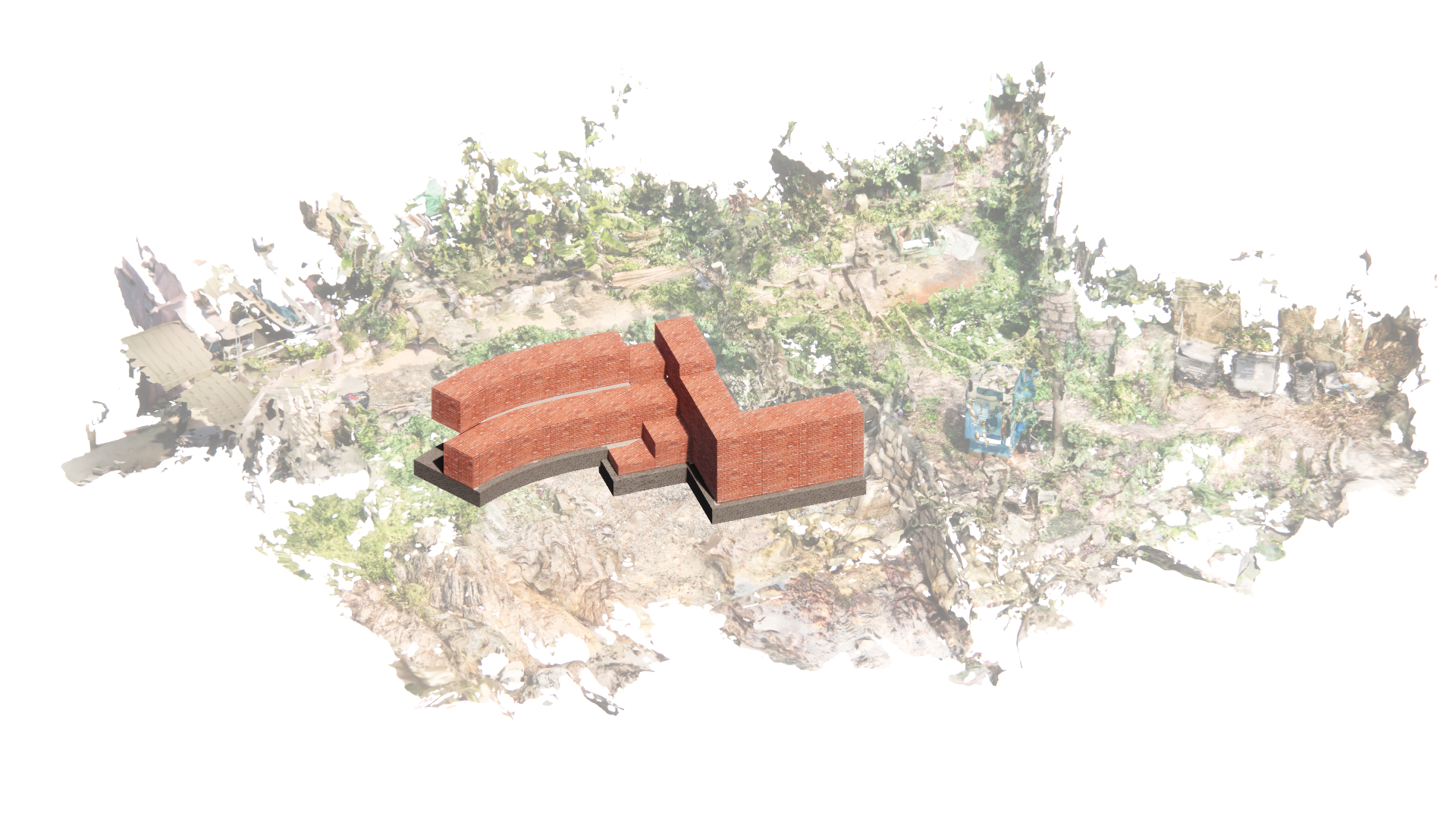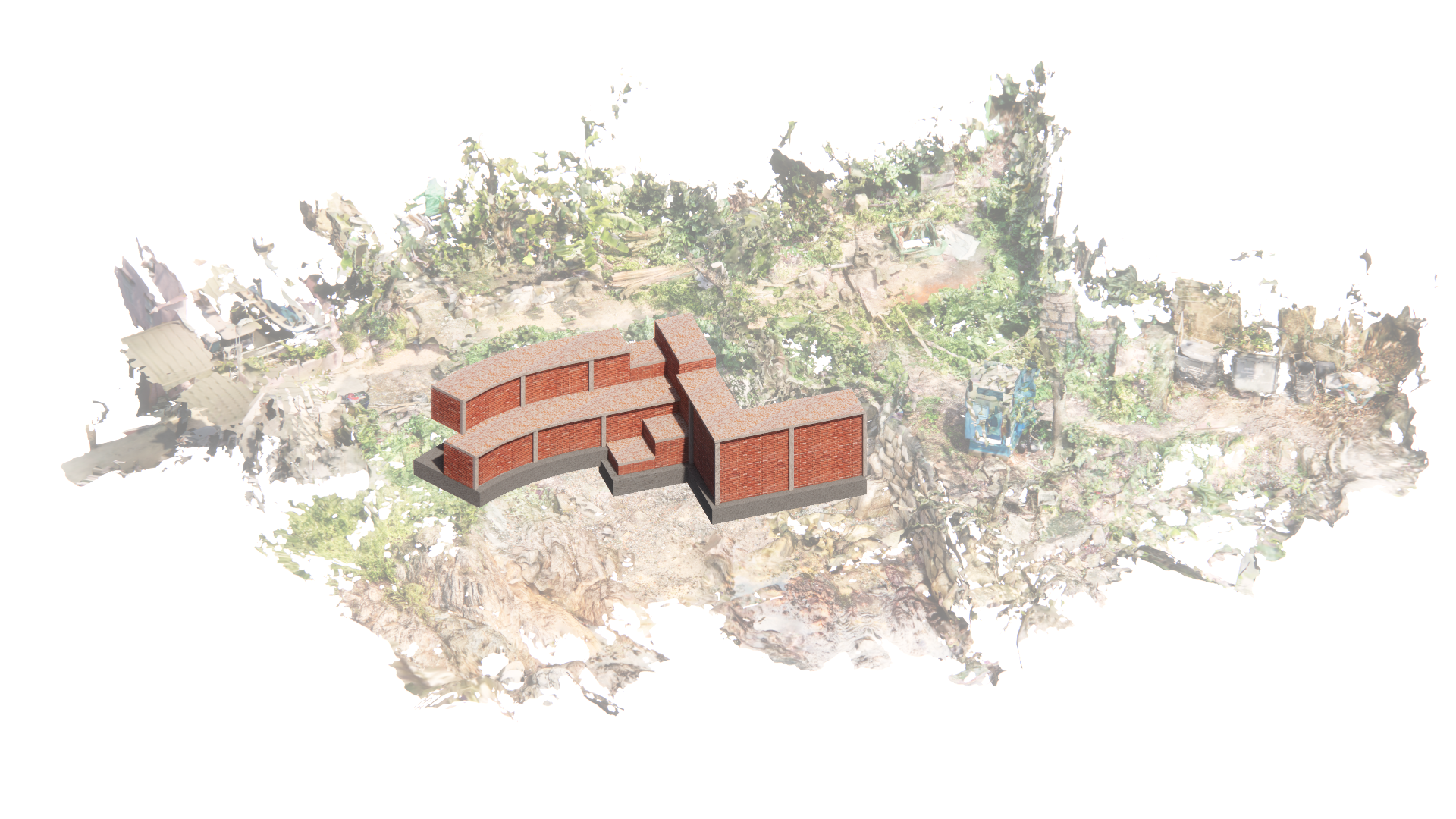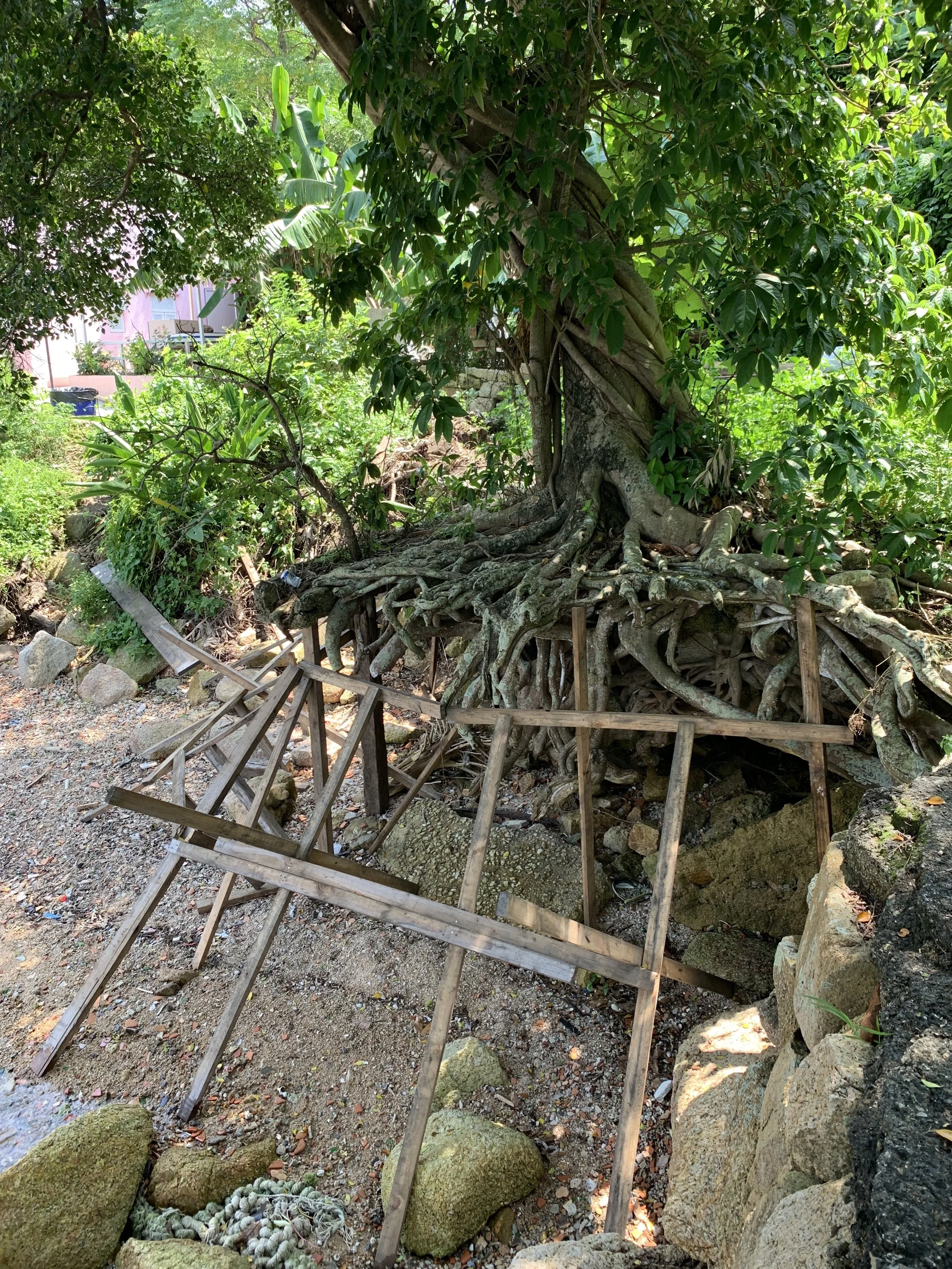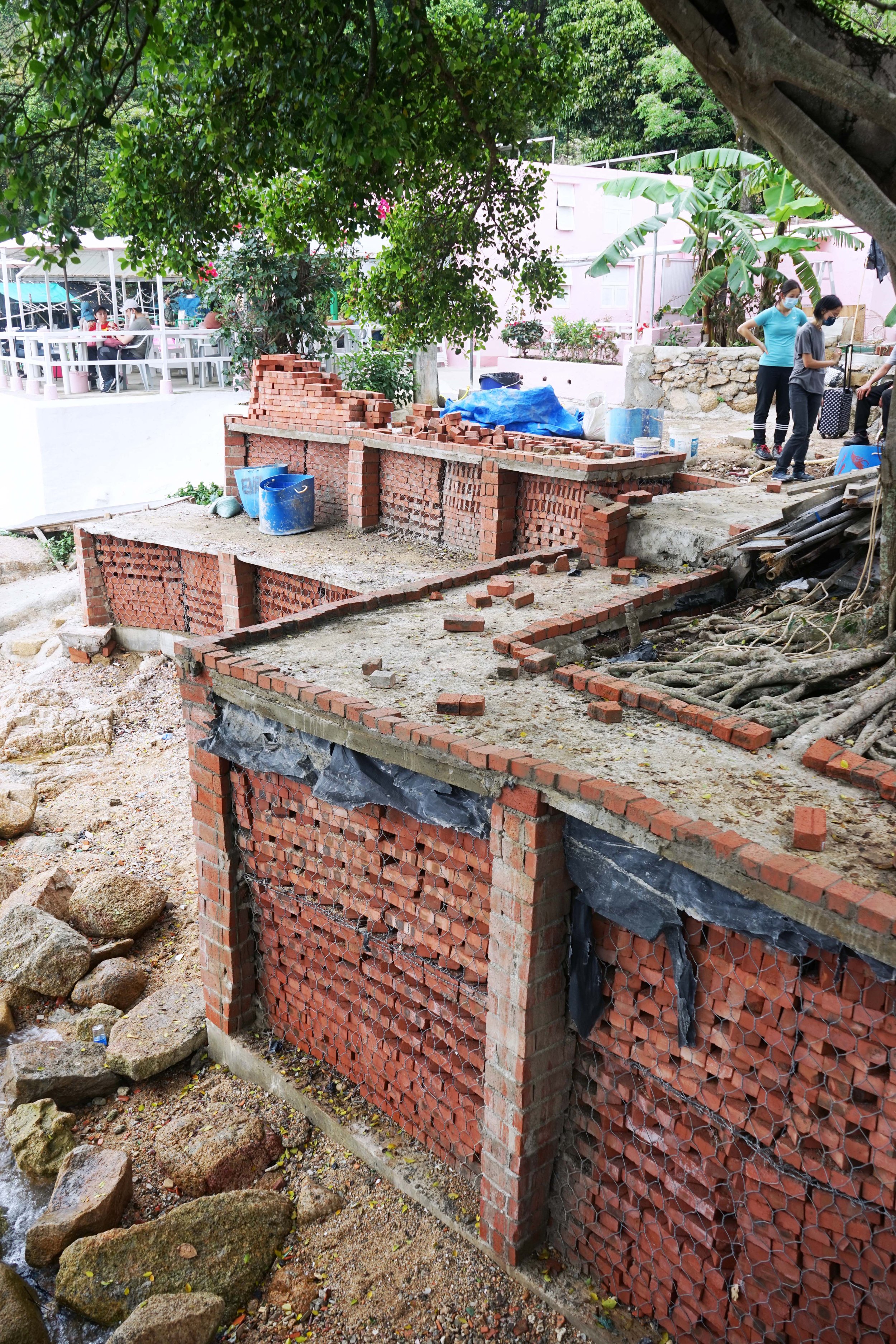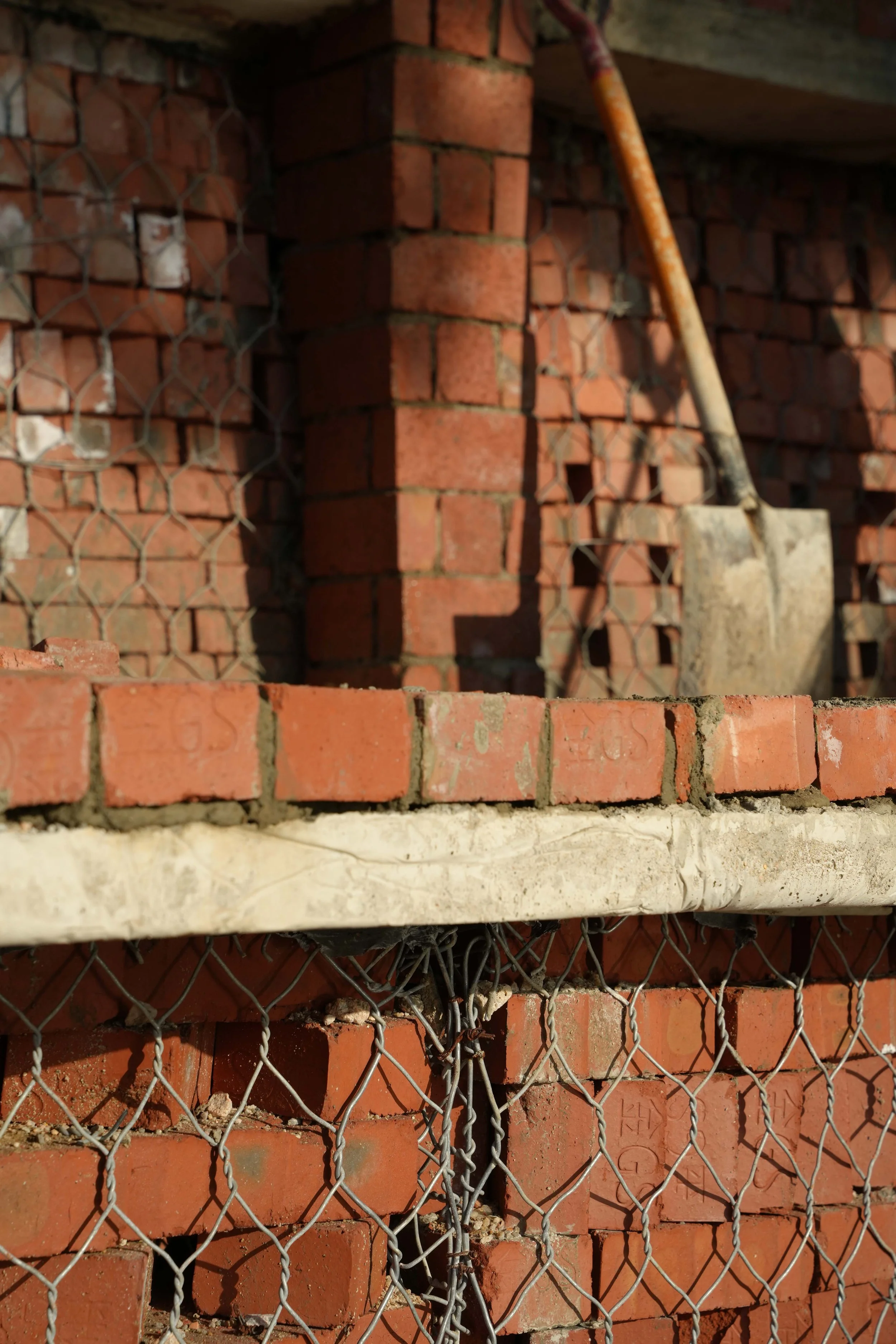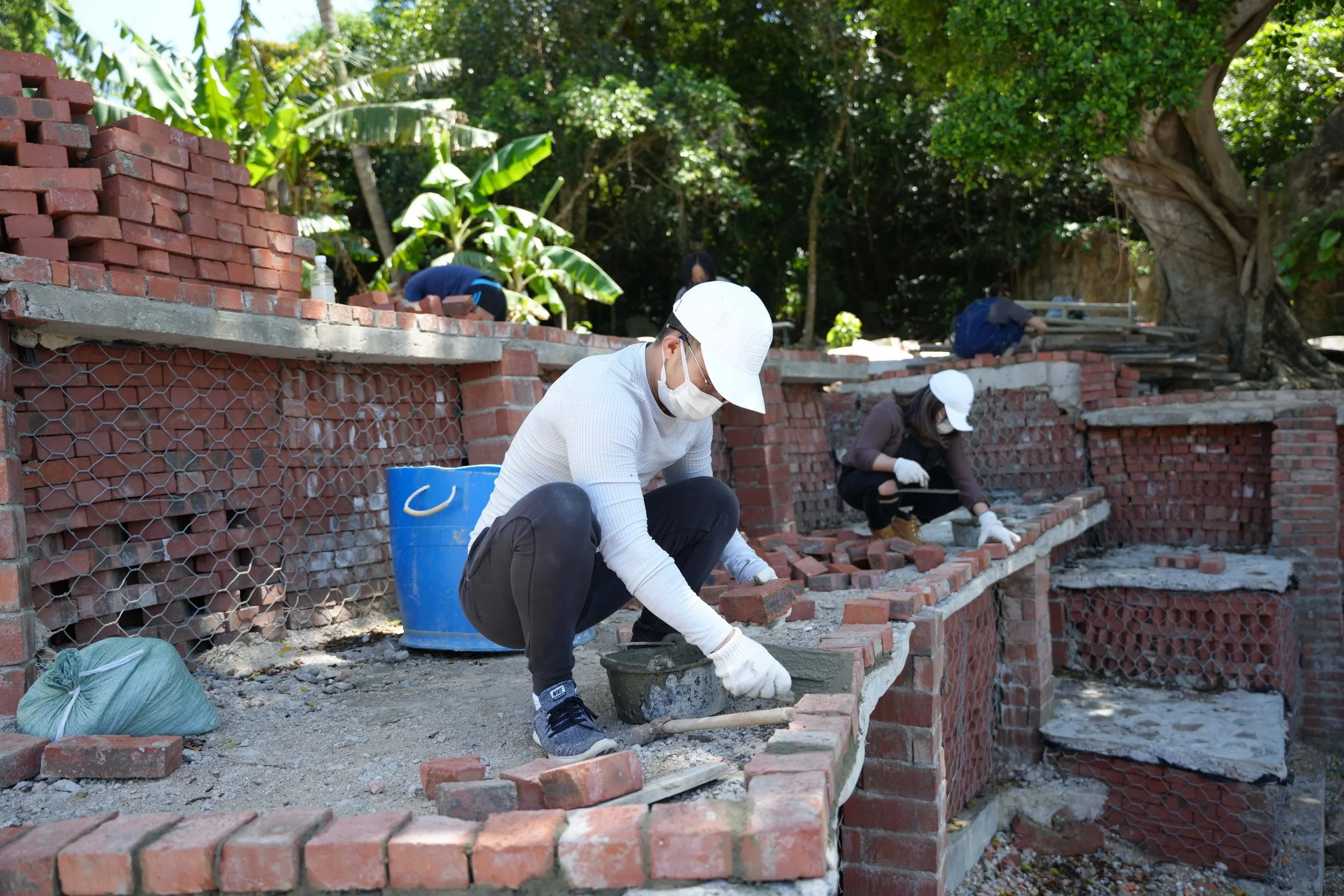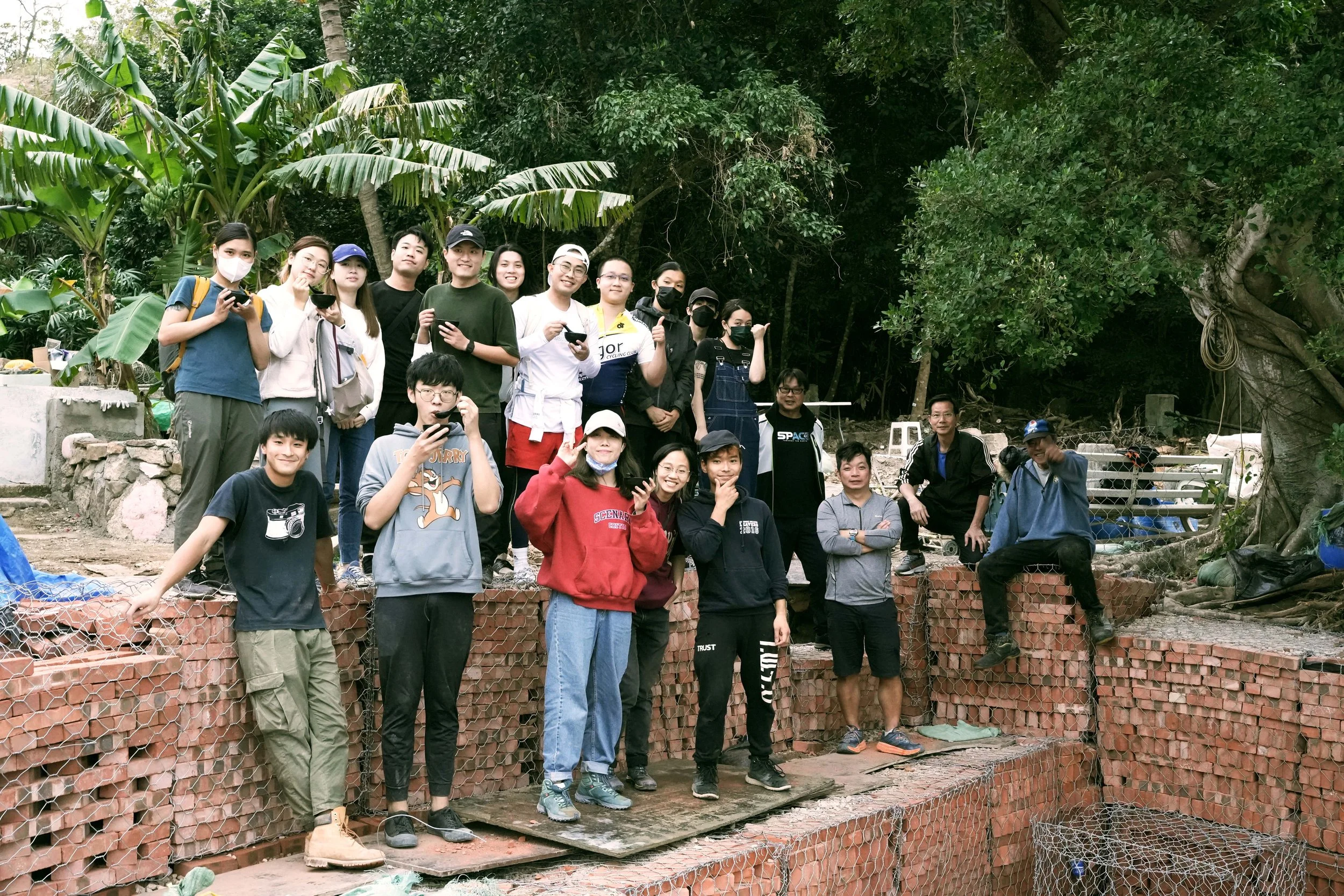ancient tree defense
Project Tombolo Pt. II | Architecture as (social) infrastructure
2022-23 | Hong Kong | Retaining Wall Design + Construction
“we set out to find clients who don’t know they have potential projects for architects yet…”
The endeavors on Po Toi Island continued with the Ancient Tree Defense, designed to protect a seaside tree from collapsing because the tides brought the soil underneath away, creating a void below the tree. We designed a gabion retaining wall, filled with bricks which is porous and does not drench the soil around. Being next to the pier, it also allows for a breezy and sheltered space for people to sit and wait for the ferry back.
The project is complex in terms of labour, logistics and construction. Using smaller sized and lighter materials, we were able to construct an entire infrastructure with manual labour. With help from villagers, friends, teachers and students over the past six months, the project is currently complete and have proven to be able to withstand rather severe storms in the past tropical cyclone season.
3D scanning had been performed at the site to ensure the material quantity we purchase is correct according to real site conditions. The 50 tonnes of bricks, cement and metalware was crane-lifted to the pier and subsequently assembled by hand onsite.
Interactive Construction
The construction took place every weekends, spanning from late 2021 to mid 2022. We spent one month on site formation and foundation casting, two months on setting gabion walls and backfill, and another two months for further strengthening the structure and finishing.
The construction here is unique in the sense that I was able to witness and tweak much of the design real-time as the designer and worker on the project according to site condition and feed back from villagers. For example, when thinking about materiality of the accessible platform on top of the gabion cages, we assessed the amount of material left from infill and came up with the ‘brick terrazzo’ pattern as a more economic and visual material than plain concrete.
Building as Social Work
Due to the heavy nature of the retaining wall, construction work is extremely labour intesive. We recruited a sizeable group of volunteers and friends to help out along the process, surprisingly leading to a close relationship between our group and villagers. While we were working by the pier, tourists would approach us about the project, learning more about the island and its issues. This proves that collaborative building, when happening in an organic context, has a profound potential as an effective means of social networking.
It is based on these experiences that Project Tombolo continues, hoping to look at Hong Kong’s rural space with a fresh lens. We believe that real architectural design can be as pure as studio projects - helping overlooked communities in Hong Kong’s rural space with new strategies of space, structure and material, re-engaging the public with a discipline that has long been professionalized and alienated from its end users.

